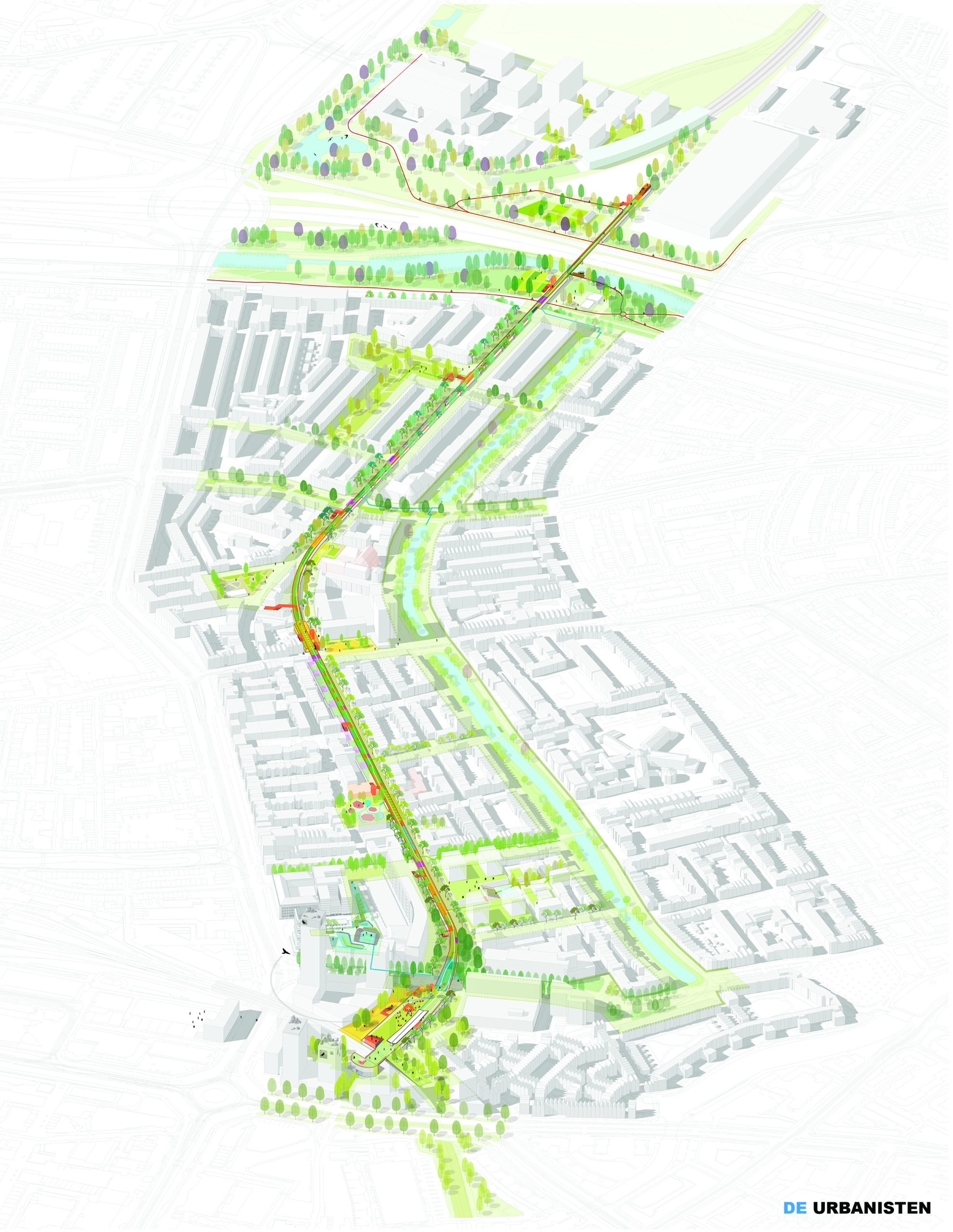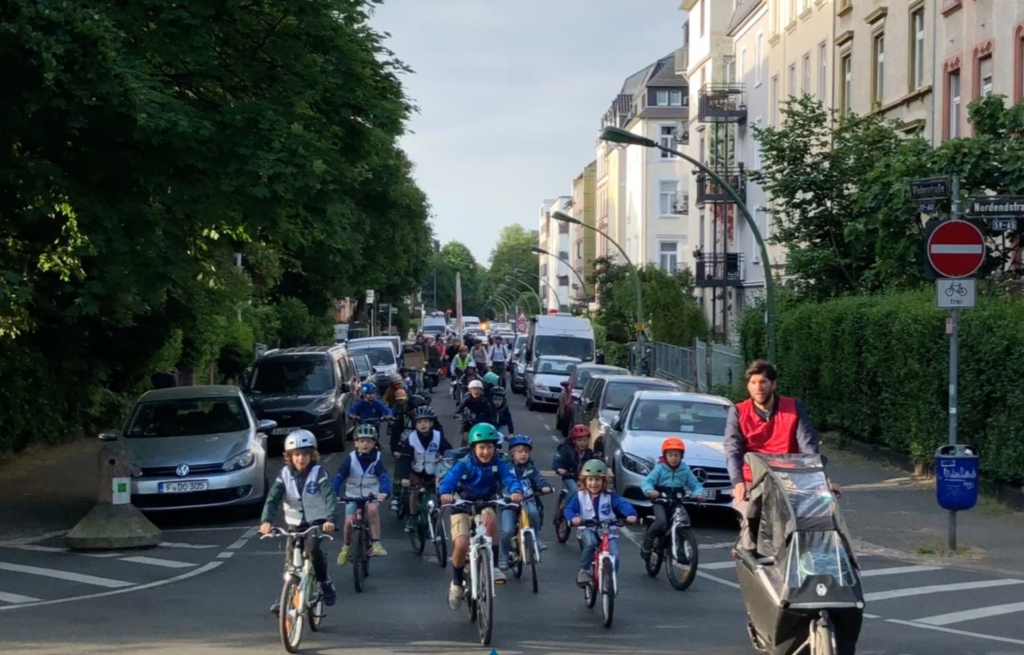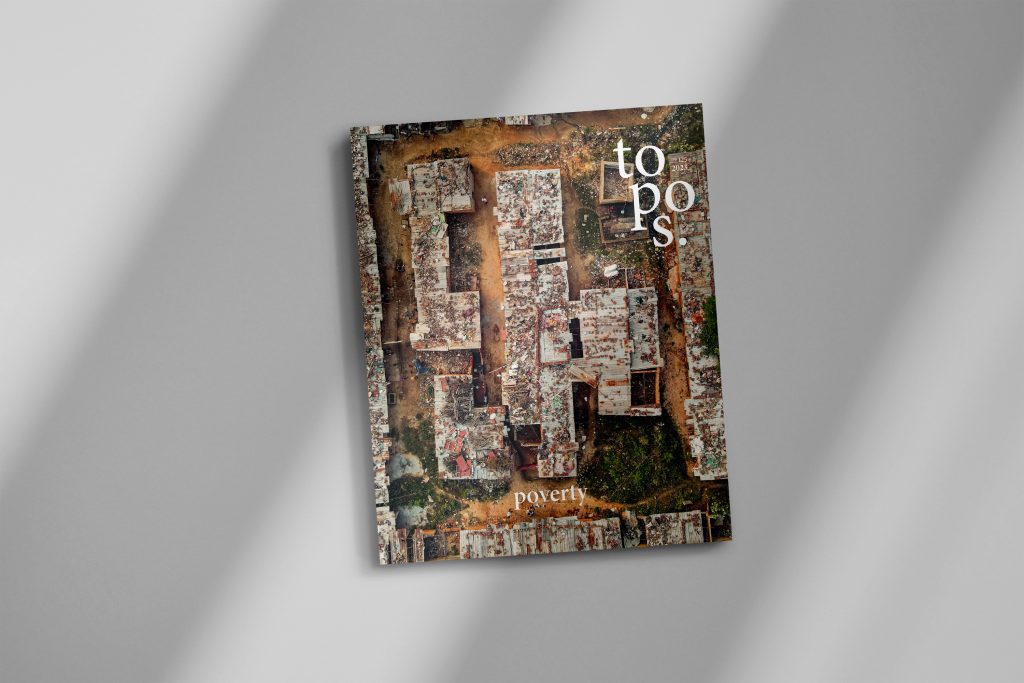A linear, elevated green space: Hofbogenpark in Rotterdam

The Hofbogenpark will connect several neighbourhoods in Rotterdam an offer space to humans and animals like. Image: De Urbanisten
Billboard
Skyscrapper
Halfpage
Rotterdam is planning a new park: Hofbogenpark will be located on the roof of a railway viaduct, running through four urban districts. Read more about the two kilometre long and six metre wide roof park.
The final designs have been approved and the work on Hofbogenpark in Rotterdam can begin. This public park will be the longest and narrowest roof park in the Netherlands, inviting visitors for a walk of up to two kilometres. The narrow park will be only six metres wide but its architects plan on offering a “lush, colourful, and fragrant linear landscape”. Running through four different neighbourhoods, the park will offer important connections at the level of the treetops. Differently sized platforms will be present throughout the park, making space for activities such as play, sports, relaxation, or picnics. And balconies along the line will provide views of the surrounding city. Access to the elevated park will be via stairs and elevators.
Rotterdam’s city council has approved the final design of Hofbogenpark by De Urbanisten in collaboration with DS Landschapsarchitecten. Now, the tender procedure can start. Construction of the park will start in 2025, funded by the Municipality of Rotterdam and the Dudok Group. Costs will likely be around 53.7 million Euros.
Medium Rectangle
Halfpage


A climate-adaptive urban solution for humans and animals alike
The linear park will be at a height of roughly 6 metres above ground level, following the former Hofbogen railway viaduct. While offering recreational space for people, it will also provide a large ecological corridor for animals and plants. The idea is to bring nature closer to the heart of the city. Native planning and freshwater bodies offer space, shelter, and food for bees, butterflies, toads, bats, birds, and hedgehogs. They will even have their own staircases to get on and off the roof park.
Climate adaptation is another important goal of the Hofbogenpark: Rotterdam is located in the Dutch delta and therefore vulnerable to the effects of climate change. Sustainable water management is a key coping strategy for the city. With this park, Rotterdam wants to showcase next-generation climate-adaptive urban solutions. Rainwater from the surroundings of the parks will be collected and treated by natural processes and stored in an underground aquifer. In times of drought and heat stress, this aquifer will provide clean rainwater.
In addition, the generous greenery will increase biodiversity in the city and provide a cooling effect during the summer. With a self-sustaining water system, Hofbogenpark will combat water overflow and drought: No tap water is necessary to water the plants, fountains, and water features in the park.

An incubator for neighbours and entrepreneurs
The Hofbogenpark will form part of a larger network of public spaces around the former railway line. The city plans on greening the surrounding streetscape and connecting open landscapes around Rotterdam with the city. In the end, a network of parks will allow visitors and residents to make their way through the city mostly through interconnected green spaces.
De Urbanisten worked closely with DS landscape architects and De Dakdokters, involving the communities of surrounding districts, to find a design that works for everybody. Dudok Group, a Dutch property developer, owns the railway viaduct, which used to be an important city icon. For almost 100 years, the Hofpleinlijn was the main railway connection between Rotterdam and The Hague-Scheveningen. It offered the first electric railway of the Netherlands and was particularly popular for weekend trips to the sea. The viaduct, built in 1908, was unconventional for its era due to its use of reinforced concrete. This allowed for a strong and lightweight construction that has stood the test of time.
In 2002, the Hofplein viaduct became a national monument. The former railway viaduct, which will now host a park on its roof, also serves an important social function for surrounding neighbourhoods: It houses shops and businesses in its arches. The park will increase opportunities for social gatherings and entrepreneurial exchange as well as neighbourhood activities.
Medium Rectangle
Halfpage


A journey across two kilometres
Much like a train journey, the landscape of the Hofbogenpark will undergo a transformation during the 2-kilometre-walk along the railway arches. At Hofplein station, city life takes centre stage. Heading North, the landscape becomes more tranquil with elements of flowing water. The landscape architects drew their inspiration from railway embankments, showing a blend of naturally occurring plants and plants from surrounding areas. The dynamic landscape with its naturalistic approach to maintenance will change from season to season and develop variations over time.
The different platforms have a unique character tailored to the desires of local residents and each neighbourhood. For example, a platform with tables and benches offers picnic spaces in the Zomerhofkwartier. In contrast, the water platform at Bergselaan is designed for quiet reflection and reading. And in Ammersooiseplein, there will be a play area with a slide for children.
Read more: In 2022, Rotterdam hosted “The Podium” by MVRDV, a temporary rooftop stage.











